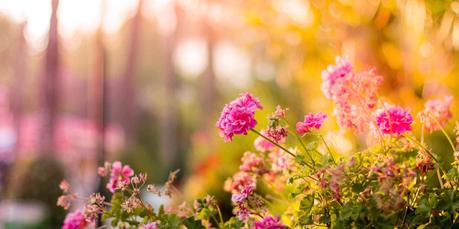
Imagine stepping into your backyard and being greeted by a symphony of chirping birds, fluttering butterflies, and busy bees buzzing around. It's a scene straight out of a nature documentary, right in the comfort of your own outdoor space. Creating a wildlife-friendly garden is not only a delightful experience but also a meaningful way to support local ecosystems and promote biodiversity. In this article, we'll explore the joys and benefits of wildlife-friendly gardens and provide you with practical tips to transform your own backyard into a haven for wildlife.
Why Go Wildlife-Friendly?
- Preserving Biodiversity: By designing a garden that attracts and sustains a diverse range of wildlife, you become an active participant in preserving biodiversity. As natural habitats continue to diminish, our gardens can serve as essential sanctuaries for local flora and fauna, providing food, shelter, and breeding grounds for a variety of species.
- Pollinator Paradise: Pollinators, such as bees, butterflies, and hummingbirds, play a vital role in our ecosystems and food production. Creating a wildlife-friendly garden with an abundance of nectar-rich flowers and plants ensures a steady supply of food for these important pollinators, contributing to the health and sustainability of our environment.
- Pest Control: Encouraging natural predators like ladybugs, birds, and bats to frequent your garden can help keep pests in check. These helpful creatures feast on insects that may otherwise damage your plants, reducing the need for harmful chemical pesticides.
- Educational Opportunities: A wildlife-friendly garden offers an incredible opportunity for learning and discovery. Observing the interactions between different species, studying their behaviors, and identifying various plants and animals fosters a deeper connection with nature and promotes environmental awareness.
Creating a Wildlife-Friendly Garden
- Native Plants: Incorporate a variety of native plants in your garden. These plants have evolved alongside local wildlife and provide the most suitable food sources and habitats. Research native plant species in your region and choose those that are well-adapted to your climate and soil conditions.
- Blooming Success: Select plants that bloom at different times throughout the year to provide a consistent source of nectar and pollen. Include a mix of flowers, shrubs, and trees with varying colors, shapes, and sizes to attract a wide range of pollinators.
- Water Features: Install a bird bath, pond, or small water feature in your garden to provide drinking and bathing opportunities for wildlife. Ensure a shallow area or rocks are available for creatures to safely access the water.
- Shelter and Hiding Spots: Incorporate elements such as birdhouses, bat boxes, rock piles, and dense shrubs to create shelter and hiding spots for wildlife. These structures offer protection from predators and harsh weather conditions.
- Avoid Chemicals: Minimize or eliminate the use of chemical pesticides, herbicides, and synthetic fertilizers in your garden. These substances can be harmful to wildlife and disrupt the delicate balance of ecosystems. Opt for organic and natural alternatives to manage pests and nourish your plants.
- Sustainable Garden Practices: Practice water conservation by using mulch, drip irrigation systems, and rainwater harvesting techniques. Compost your kitchen scraps and garden waste to enrich the soil naturally. These sustainable practices benefit both your garden and the environment.
- Wildlife-Friendly Accessories: Place bird feeders, butterfly houses, and nesting boxes strategically in your garden to attract and support different species. Research the specific requirements and preferences of different wildlife and tailor your garden accordingly.
Remember, creating a wildlife-friendly garden is a journey that evolves over time. As you observe and learn from the wildlife that visits your garden, you can make adjustments and additions to better cater to their needs. Embrace the beauty of nature and revel in the joy of coexisting with the wildlife in your own backyard. Let your garden be a sanctuary—a vibrant ecosystem where harmony between humans and nature flourishes.
So, grab your gardening gloves and get ready to welcome an array of fascinating creatures into your life. Together, let's make a positive impact on our environment and create wildlife-friendly gardens that inspire awe and wonder for generations to come.

